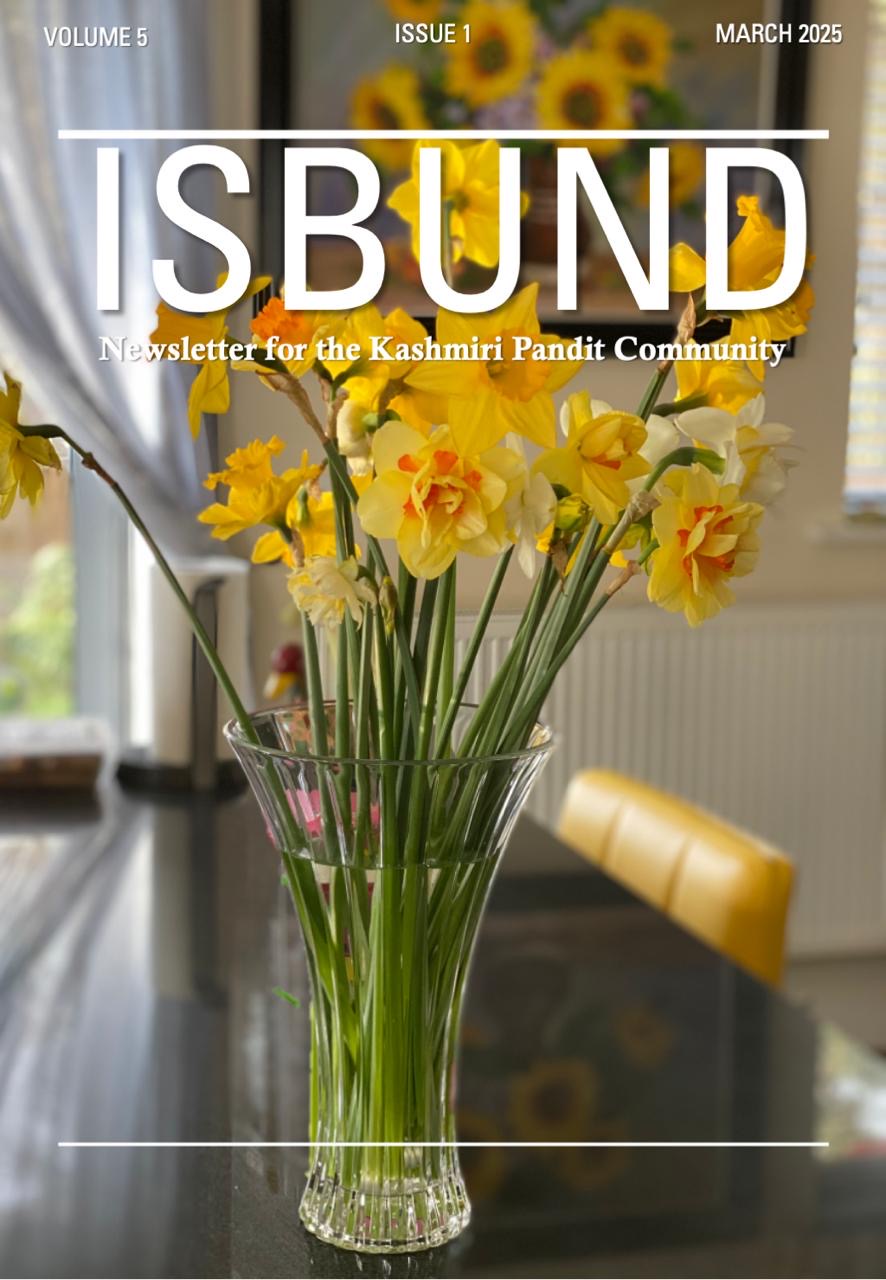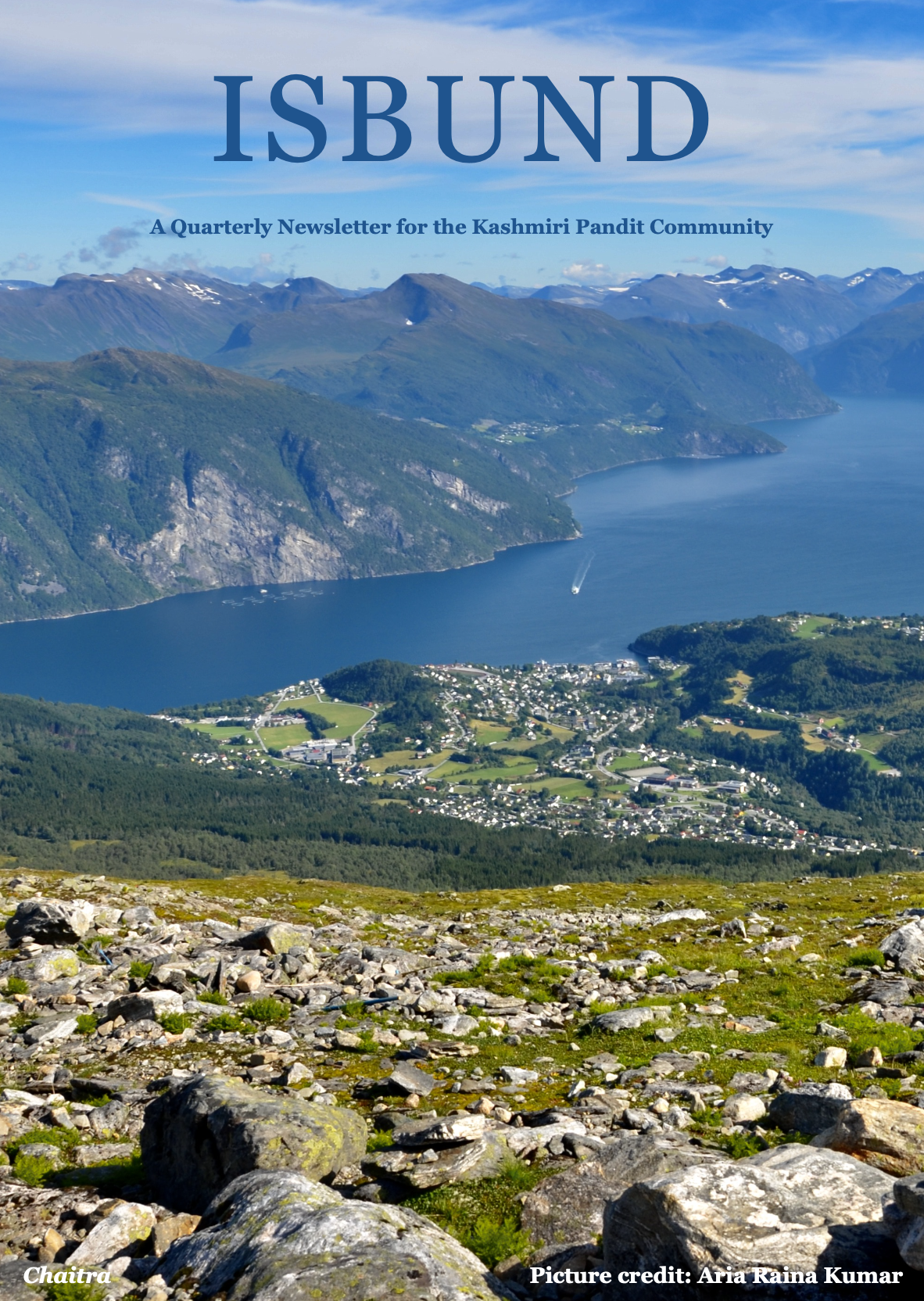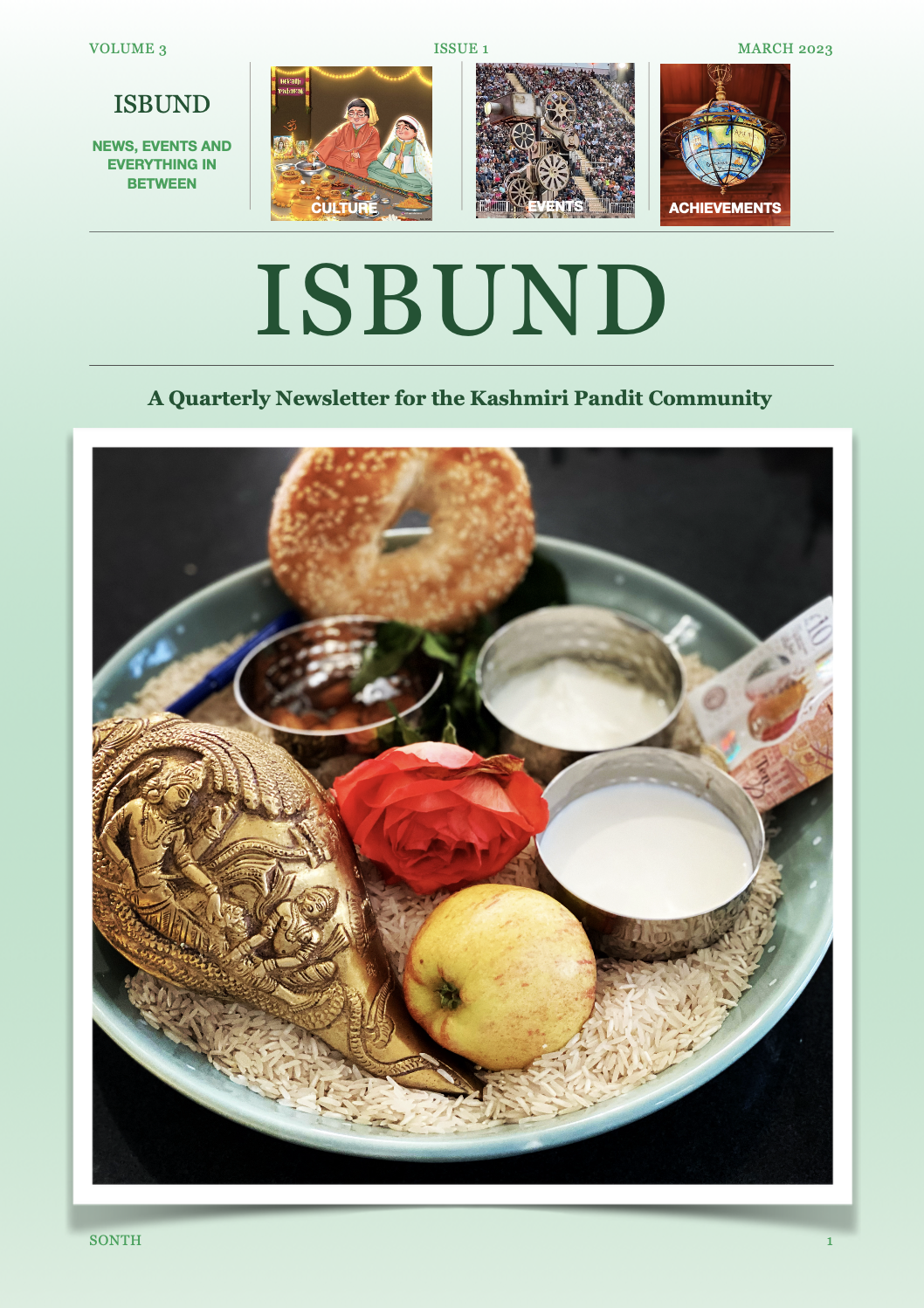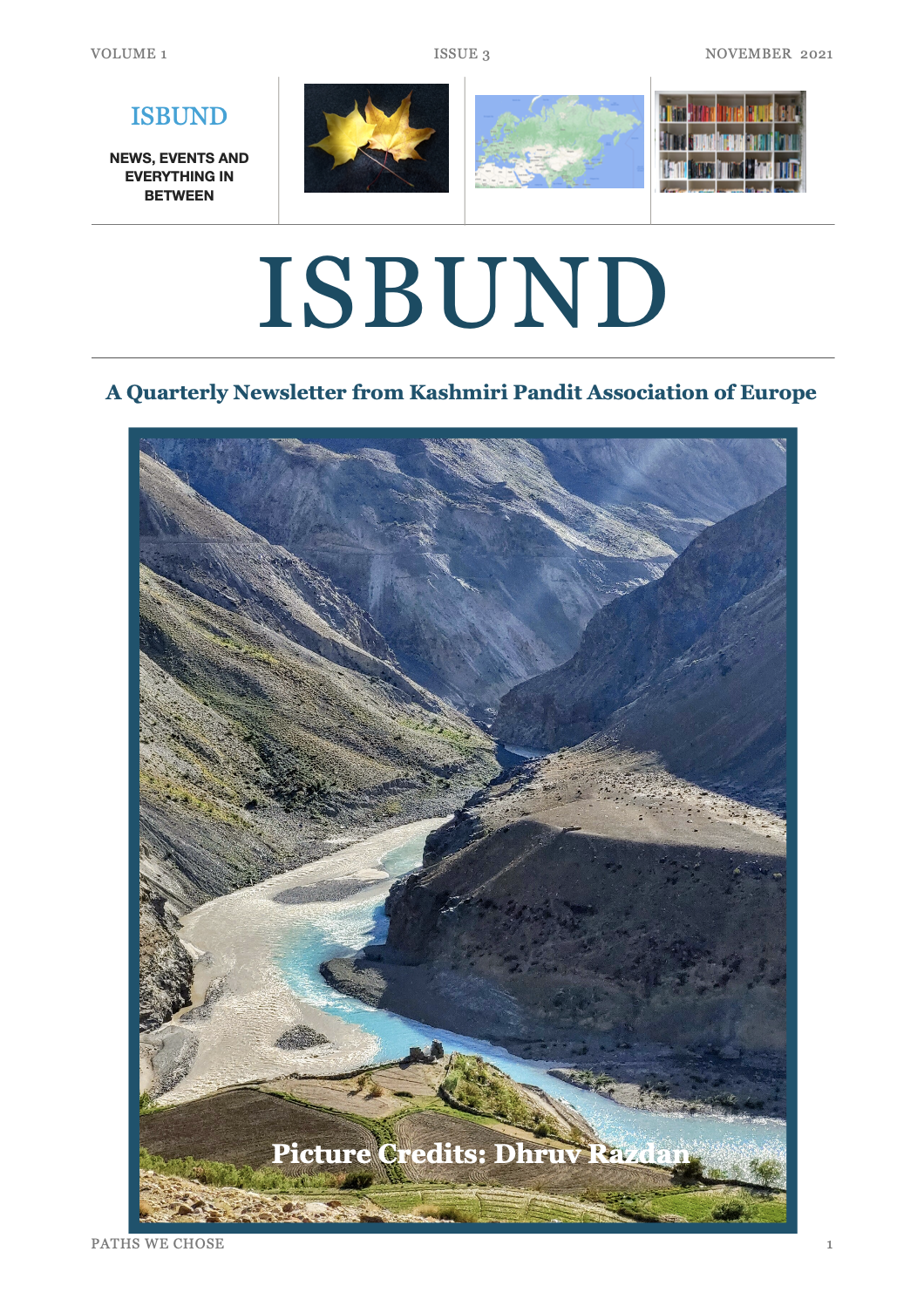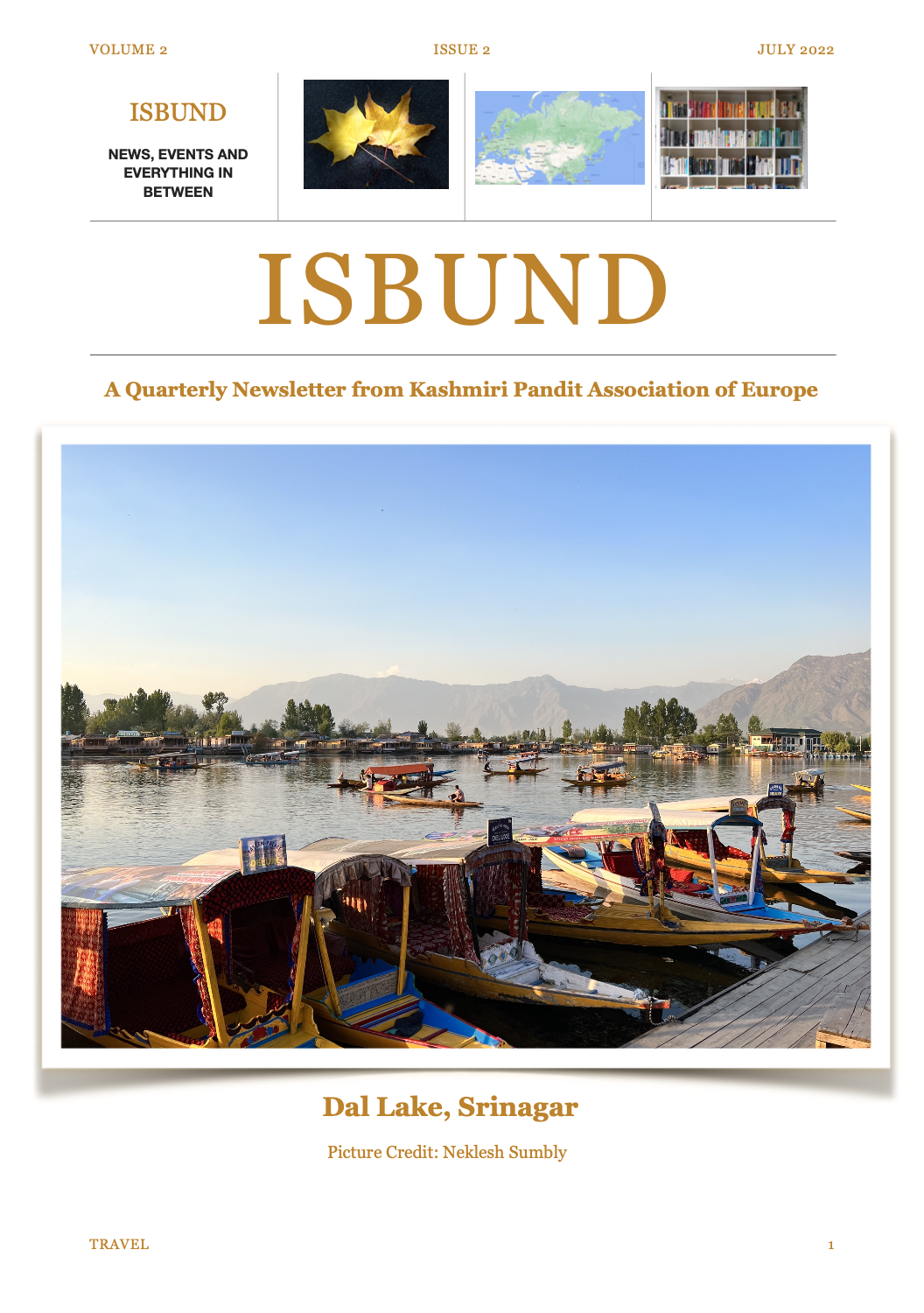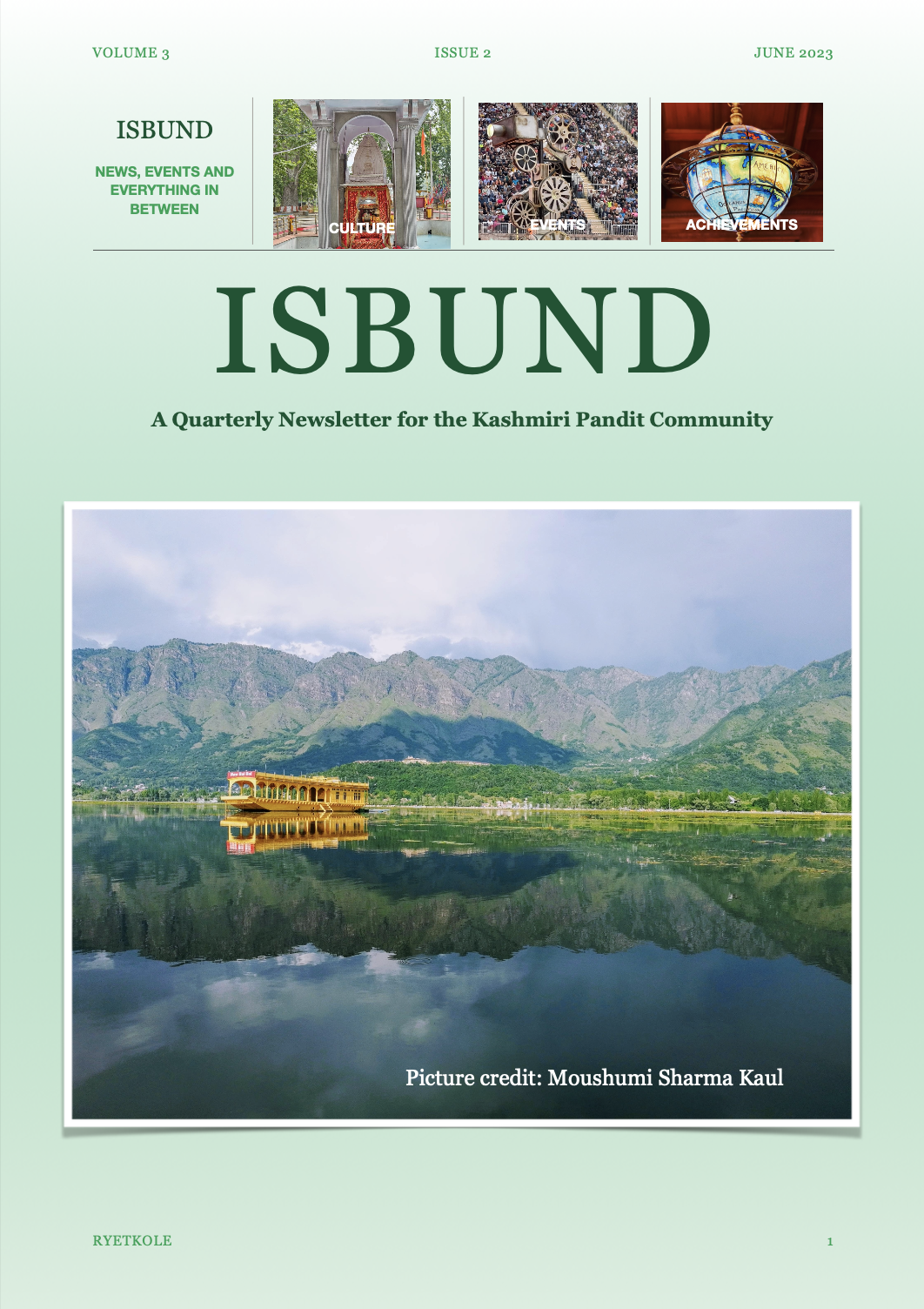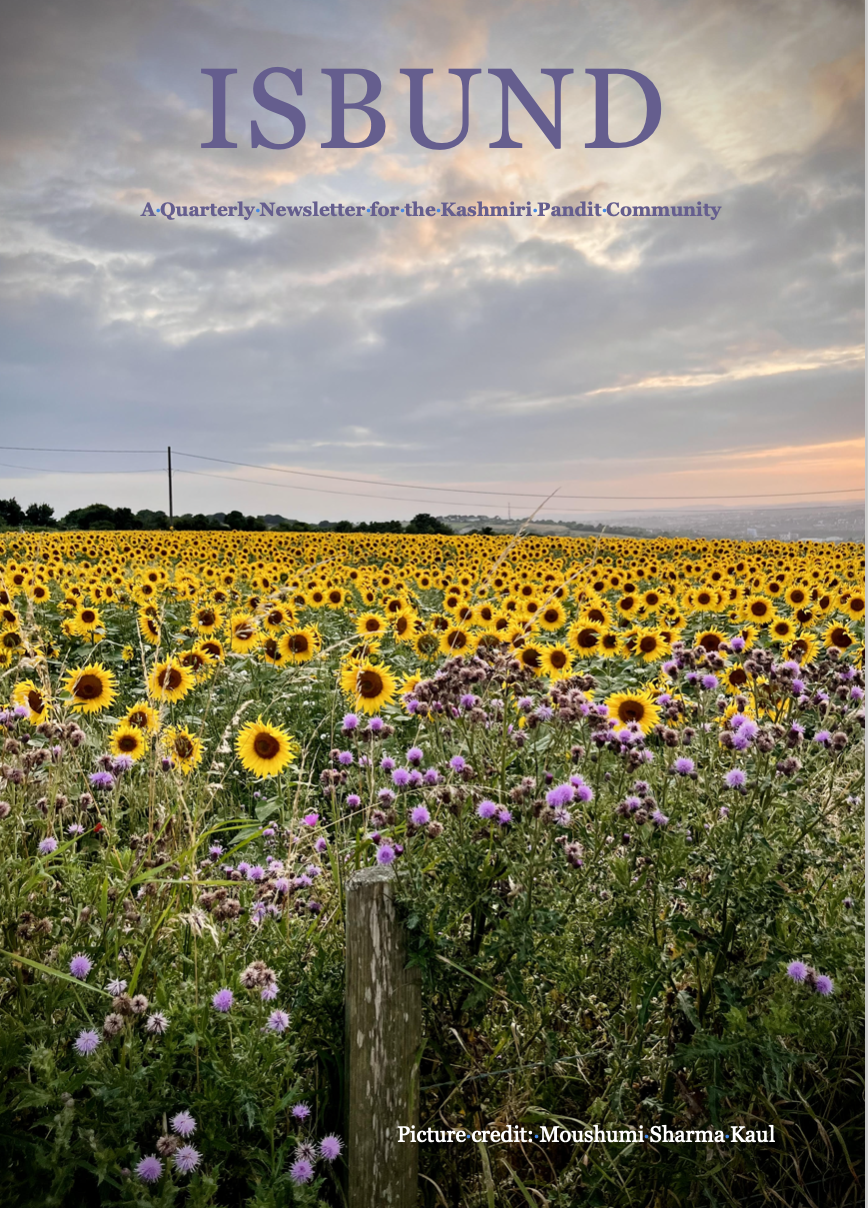
From the Editor’s Desk
16 August 2024
Tulmul is an emotion, just like monjh haakh or dum aloo, but grander—richer in memory and meaning. The mention of Zyeth Asthami always transports me back to the Kashmir of the 1980s, a place alive with tradition and togetherness. I vividly recall the anticipation of our last trip to Tulmul or Kheer Bhawani mandir on that warm, sunny day in 1989. The early morning chill still lingering in the air as we all piled into a minibus, children and adults alike, our voices blending into a joyful chorus of leelas, invoking the blessings of the goddess.
As we arrived at the grand grounds of the temple, the sacred space seemed to open its arms to us. I remember the bowli, where we would take a ritual dip, the cold water waking us up fully before we proceeded to seek Mata’s darshan. The atmosphere was thick with devotion, the sound of more leelas rising and falling like a gentle wave. Everyone was lost in deep chanting, yet the moment you looked around, you’d bump into someone you knew—a friend, a distant relative. It was like the whole Kashmiri Pandit community had gathered there, connected by something bigger.
I remember sitting in a perfectly squatted pose, hands folded, embodying the model child in that holy place. Guruji’s prayers resonating through the temple grounds, I watched intently as he dropped the kand into the milky waters of the nag. It felt like magic, like we were all part of something timeless and sacred, where time stood still, and all that existed was the sacred connection between us, the goddess, and our shared heritage.
With prayers offered and prasad in hand, we ran off to play, our laughter echoing through the temple grounds. We feasted on looochi and halwa, our tummies and hearts equally full. As the sun began to set, casting everything in a golden light, we began our journey home, tired but happy. Those Zyeth Asthami days in Tulmul are etched in my heart forever—a beautiful reminder of where I come from.
Every year, the Tulmul hawan in London brings those memories flooding back. It’s a tradition that revives the spirit of those days, and I’m so glad my daughter gets to witness a part of my childhood, something so precious and priceless. Thank you to all the organisers and volunteers who make this happen year after year. You not only transport us back to those golden days but keep the nostalgia alive. It’s no small task, but you ace it every single time, and for that, I am deeply grateful.
It, therefore, gives me immense pleasure to share this issue of ISBUND, filled with memories from Tulmul. In these pages, you’ll find personal recollections and memoirs from those who attended this year’s hawan, their hearts brimming with memories, both old and new. Also included are pictures from this year’s Tulmul hawan, alongside snapshots from our Navreh and Herath hawan. And don’t miss the special feature on our very own Kapil, who had the privilege of making the Amarnath Yatra this year. Head over to page 17 to read about his journey. As always, I’ve thoroughly enjoyed compiling this issue, and I hope you enjoy it just as much.
With best wishes
Team ISBUND
Read the full issue here.

